A trio of spots worth your time.
Neko Sushi, Juan Ramirez de Velasco 471, Villa Crespo. This one popped on the radar as something different in the sushi world, because their focus, the claim is, is on “sustainable fishing” and not aqua-farmed. So they don’t work with the ubiquitous aqua-farmed salmon.
So, putting that claim to the test – the night I went, what was on offer were trout, sole, grey mullet, and sea bream; along with prawns and octopus. Ummm… Argentine trout, while certainly sustainable, is aqua-farmed, or at the very least, restocked into lakes and rivers from aqua-culture nurseries. Grey mullet, sea bream, and octopus are all rated “avoid” for sustainability by the Marine Conservation Society. Prawns, here, are almost always aqua-cultured. Sole is mixed. Some species are marked avoid, some are considered sustainable. I can do the math. If the claim is for sustainability, the only things here that fit are trout and prawns, and maybe the sole. If they’re avoiding aqua-cultured species, two of those are eliminated. You might make a case for the trout, if it’s caught wild, even if it started off in a pen….
I think we’ll just eat.
Gyoza, because, as par usual, dumplings. Beautifully delicate wrappers, perfectly golden and lightly crisped. A shame that the filling consisted of, as best I could tell, literally nothing but pork. No evidence of the promised chinese cabbage, ginger, or garlic, and no seasoning, just a precooked, marble sized meatball, loose and rolling around inside the wrapper. I mean, they make a point of all the ingredients inside the dumpling, I literally couldn’t see or taste them. At 380 pesos for 5, no.
Thankfully, redeemed with their 5-piece nigiri moriawase – a selection of five pieces of nigiri sushi of the sushiman’s choice (and not necessarily ones from their short list of offered nigiri, it’s chef’s choice). Two different preparations of trout, one prawn, one octopus, and one sole – all delicious, fresh, and creative. 650 pesos for 5 is a tad steep, coming in at $2 per piece of sushi, but not out of line for good, creative spots and the quality.
And also one roll, with a trout tartare and avocado inside, trout sashimi on the outside, and a spicy mayo and roe garnishing. Delicious, and while again, expensive, not out of line at 550 pesos. I did wonder why they don’t use trout roe rather than black lumpfish roe.
They have a lovely and tasty housemade ginger soda that was a great accompaniment to the meal. Overall, quite good, and I’d happily return. We’ll just ignore their claims to sustainably fished species, since they do. It’s also just half a block from the much acclaimed, and extraordinarily hard to get into, Tintoreria Yafuso, and I prefer this spot.
Tigre Morado, Dr. Emilio Ravignani 1691, Palermo. A friend who spends part of each year down here clued me in to this new Peruvian spot, which he stumbled upon out walking around in Palermo. It just opened, and in short order, I started seeing it pop up in other references. Henry and I decided to give it a shot. While there are a few scattered casual homestyle Peruvian restaurants in Palermo, it’s been awhile since there’s been a nicer place to go, with some creativity to it.
It’s a pretty space, very nautical (and there’s a downstairs bar that looks like a wicker festival on a submarine). Service if friendly and efficient.
I ordered a leche de tigre, one of my favorite lighter appetizers – the juices of a ceviche, plus a few pieces of fish, prawns, and calamari in it. Nice flavors, nice balance, could have used more spice, and a little bowl of hot sauce was brought to the table on request. 250 pesos.
Henry went with the full on ceviche norteño appetizer, which… was exactly the same thing except only fish. Not sure what the fish was, maybe sea bass or sea bream, and the waiter didn’t know, nor offer to go check. This is the sort of nikkei version of ceviche, where the fish is completely raw, sitting atop the leche de tigre, so it hasn’t cured at all, other than a little on the bottom over the minute it takes to get to your table. Henry’s not a fan of that style, so he mashed the fish down into the leche and then let it sit for 10-15 minutes before eating it. I’m in agreement on this one – though I’m happy to eat sashimi, which he’s not, when I order ceviche, I want cured fish, not raw fish. 500 pesos is a bit much for an appetizer sized portion. But these are fancied up Palermo digs.
The aji de gallina, Henry’s choice – reasonably well made. We’ve talked about it here before – it’s poached chicken, shredded, and in a sauce of yellow chilies, cheese, walnuts or peanuts, onion, garlic, and milk, thickened with either bread or crackers. Here, they haven’t thickened it, so it’s a bit runny, and they’ve gotten fancy, using toasted almonds instead of the peanuts or walnuts. Still good, but changes both the flavor and consistency of the dish. At 600 pesos, it’s expensive, for a dish that at most Peruvian spots would be a bigger portion, and cost somewhere between 300-400.
And, while accurate, in hindsight, to its description on the menu, not quite what we were expecting from the bife apanão (why the strange Portuguese spelling – in Spanish it would be bife apanado?) Turned out to be a breaded and fried beef rib chop – the classic Italian version of a veal milanésa, versus local Argentine milanesas. It’s served over spaghetti (way over-cooked) in a huancaina sauce – this was even less like a huancaina than the dish above – it seemed to be little more than a sort of lightly yellow chili-ed cream – no cheese, nuts, or thickening agent, and a few scattered bits of red chili and cilantro. The cured yolk atop didn’t seem to be cured, it seemed like a raw egg yolk. Overall, just an okay dish – the steak was really oily, and overcooked, limp pasta is a cardinal sin for me. Also really pricey at 690 pesos.
A couple of bottles of water, a cubierto charge of 50 pesos a person, and tip, and this rolled in at 2500 pesos for an okay lunch with Peruvian roots, but, designed for… “posh Palermo”. A shame. We were hoping for a lot more. Still, there’s something about it that was attractive. Maybe it’s just because they’re trying for something more than being “just another” Peruvian home cooking spot. It needs some tweaking (the place is brand spanking new, just open a few weeks), though on the spice levels we can probably assume they’ve just toned it down for local palates. For the moment, I’m recommending it, but with further “research” down the road.
Regionale Trattoria, Superí 1450, Colegiales. I did not see this coming. I’d gotten several recommendations for this spot for Italian food, and looking at their Instagram feed, it looked to be a lot of really interesting, yet classic, Italian pasta recipes. Nothing prepared me for a dropped below street level spot in what amounts to a strip mall – okay, it’s just the shops under one building, but still. [Closed early 2022]
Inside, sparkling clean, gleaming, sort of looks like someone is setting up an Italian market and has only gotten as far as putting in one counter. A very few tables grace the place – there’s seating for maybe 24 people, including a couple of tables outside. Service as sparkly and friendly as could be.
The menu, likewise, not what I expected. Short and sweet, with seven appetizers, six pastas, no “main” courses, and two desserts. Kind of fits the place. I started off with the grilled mortadella, which just sounded intriguing, and something different from the norm. Unless of course you’ve always liked “fried baloney”, because, well, that’s the American bastardization of the same dish. I liked it. It’s probably better as a shared appetizer, just because thick cut mortadella is kind of intense, especially grilled. Fresh mozzarella bocconcini and one of the best pestos I’ve had in Buenos Aires accompany. 310 pesos.
This isn’t the usual bolognesa style lasagna, it’s a classic vincisgrassi, a… let’s call it “lasagna adjacent” baked dish from the Marches region. It’s one of those dishes that, like so many other pastas (and lasagnas, perhaps, in particular), is so dependent on one’s grandma’s version, and there are thousands of grandmas out there each with their own twist. The “classic” is a layered pasta dish with ragú made with chopped rather than ground veal and prosciutto, tomatoes, onions, carrots, cooked in white wine. There are often chicken giblets added to the mix too, and the dominant spicing, which makes it unique, is usually clove. The layers are then topped with another of nutmeg infused bechamel which is gratineed, and along with the clove in the ragú, gives this dish a very different character from what most of us think of when we think lasagna. As it should be, it’s not lasagna, not really (even though they call it lasagna vincisgrassi on the menu, I think that’s to help folk navigate expectations). It’s delicious. If I have any quibble with it is that I found the bechamel layer a bit overwhelming – it was a solid centimeter thick on top – just a bit much, but that’s personal taste, and I did eat every bit of it. At 460 pesos, a steal, especially for what may be the only version of this dish on offer here in BA.
The two desserts on offer morph into four – they offer classic tiramisu or lemon tiramisu (which sounded more like just whipped mascarpone with lemon syrup and a cookie), and a classic panacotta or a nutella version. I went classic tiramisu. A whopping portion that two people could easily share and still have some left over. It’s rich and decadent, it’s got all the right flavors and textures. Yum. I made it through slightly less than half of it and gave up. Another steal at 210 pesos.
A glass of wine, a bottle of water, a tip – all came in a little shy of 1400 pesos. I mean, it adds up, but honestly, if I’d have not been solo, I’d have split the appetizer and dessert, which would have brought the per person cost down to around 1000 pesos for a three course meal with wine, water, and tip. I can live with that, and it’s a spot I’d definitely like to go back and try other dishes from the menu.
And a visit to the nearby Plaza San Miguel de Garicoits, just pretty things to look at. I swear the sky wasn’t that blue, but it’s how my camera captured it….. Maybe it was….
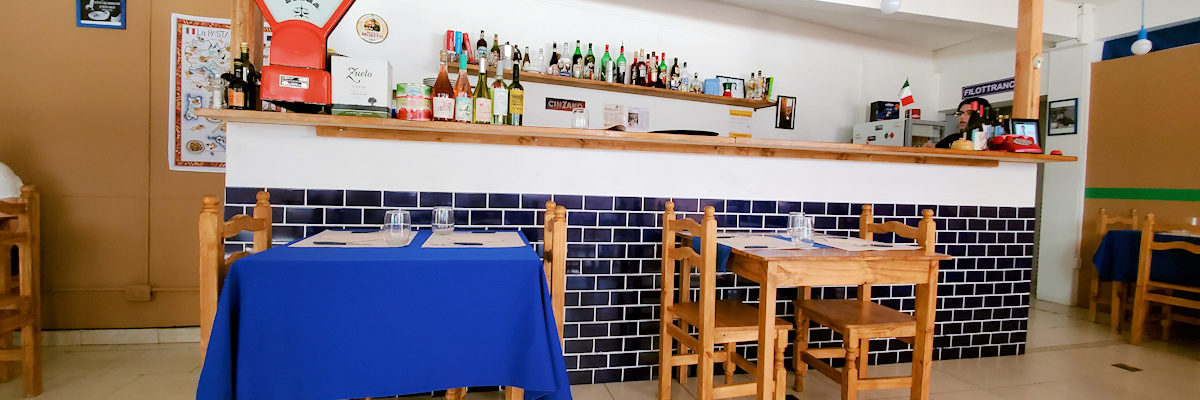
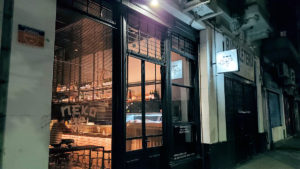
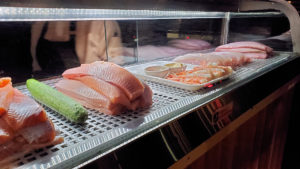
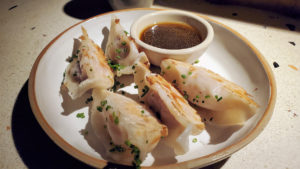
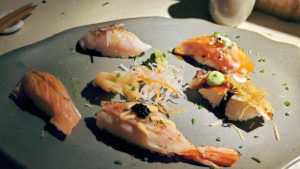
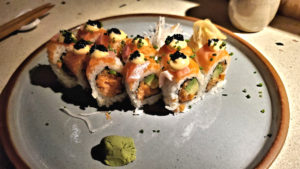
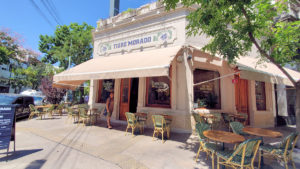

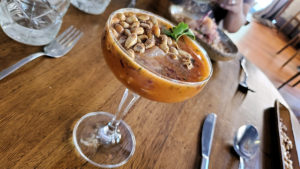
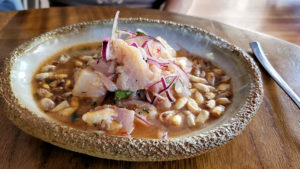
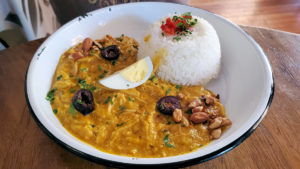
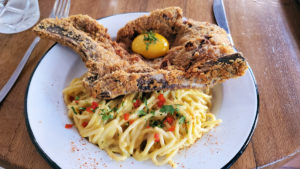
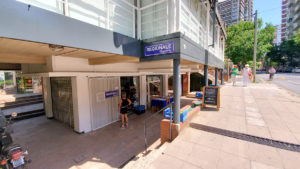
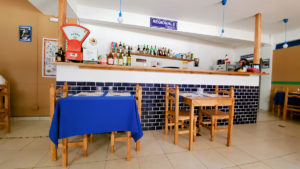
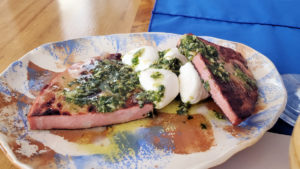
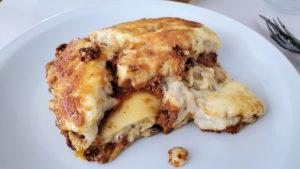
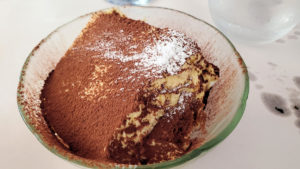
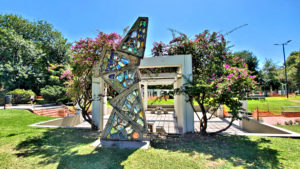
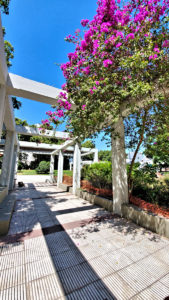
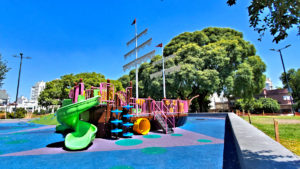
[…] places that offer it. Here in BA, as best I know, there’s only one restaurant that serves it, Regionale Trattoria. I liked their version, though thought the bechamel layer was a bit too thick – but, […]
[…] separate delivery charges and tips, so I ordered in a selection of nigiri and two half-rolls from Neko Sushi. Among the last places I reviewed before this whole pandemic thing happened. […]